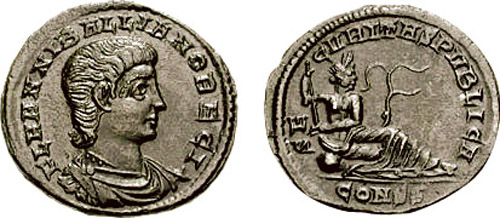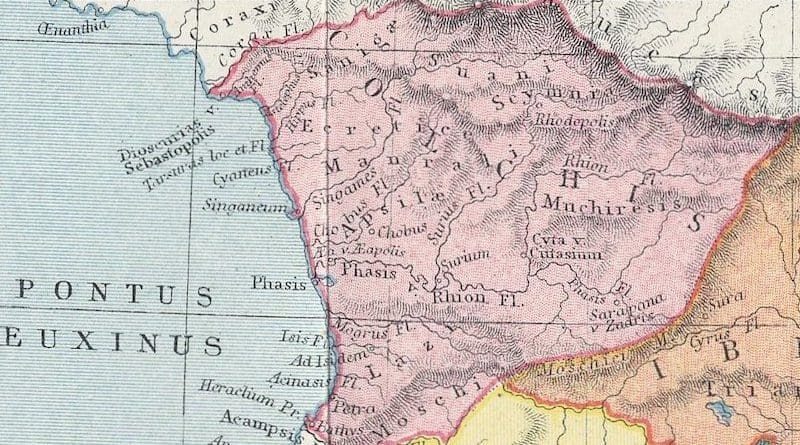NATO And Roman Pattern Of Georgia’s Special Status – Essay
By Prof. Dr. Tedo Dundua and Dr. Emil Avdaliani
As Georgia awaits the EU decision on candidate status by the yearend, which would facilitate integration into the Union, history is replete with attempts of establishing special relationship between Europe and its periphery, namely Georgia.
One of such examples is from the Roman period when much of the Romans’ centuries-long hegemony was spent in carrying through major reform programs which were to set the pattern for most aspects of life in Europe for centuries to come. The Romans had a fine reputation for political and economic integration. Indeed, they made Roman citizenship available for the kings dwelling at frontier zones, especially the Eastern one. Rome also manned the garrisons at the East Black Sea coast, in Lazica/Colchis (West Georgia). The below example from the 4th century illustrates the challenges and success of a special status invented for region.
In 324 Constantine I (306-337) defeated Licinius, his rival. Starting from this very point till the death, he is sole Augustus (senior emperor) with his sons and nephew as Caesars (junior emperors).
We are focused on the events of 335-337. Constantine is sole Augustus with his sons and nephew (Delmatius) as Caesars, certain lands being ascribed to them. And next nephew, Flavius Hanniballianus, received special title – Rex Regum (king of the kings) et ruler of Pontic people (Ponticarum Gentium) (O. Seek. “Hannibalianus (3)”. Paulys Real-Encyclopaedie der classischen Altertumswissenschaft, siebenter Band. ed. Wilhelm Kroll. Stuttgart. 1912, 2352-2353; A. H. M. Jones, J. R. Martindale, J. Morris. “Hannibalianus 2”. The Prosopography of the Later Roman Empire. v. I. Cambridge: at the University Press. 1971, p. 407; D. R. Sear. Roman Coins and Their Values. London. 1997, pp. 300-331 №№3934-3935, legend – FL. ANNIBALIANO REGI; J. J. Norwich. A Short History of Byzantium. London. 1998, pp. 16, 20). Caesars were too young to have a real power.
After Constantine’s death such division is still maintained. Soon both, Delmatius and Hanniballianus were killed. But before, Hanniballianus, king of the kings, kept formal power over Pontus.
“Pontus” was a name for large diocese (Pontica) and also, for two provinces within (Helenopontus, Pontus Polemoniacus) (For this diocese v. T. S. Burns. Barbarians within the Gates of Rome. A Study of Roman Military Policy and the Barbarians, ca. 375-425 A.D. Bloomington and Indianapolis: Indiana University Press. 1994, p. 6, administrative map is a bit changed for this period). At least, the latter “belonged” to Hanniballianus together with the coastal strip of Lazica (Western Georgia) – indeed, copper coins could come there (i.e. in Lazica) for military purposes only, as a part of soldiers’ stipendium, and copper issues of the 4th c. in Pitius/Bichvinta (Lazica/Western Georgia) are especially prominent.
If East Black Sea coast in Pontus Polemoniacus, then Hanniballianus had also his Lazi subjects, still most of the Lazi people being subjugated to their native king living deep in hinterland.
Coin finds in Western Georgia include the issues of almost all members of Constantine’s large family. Those of Hanniballianus are absent. Indeed, they were of small amount and had both, formal and symbolic meaning.

Reverse: FELICITAS PVBLICA. The Euphrates reclining left, holding fish and rudder; in exergue, CONS.
Hanniballianus’ future Asian domain was thought to be Persia (that is also why he is titled as king of the kings) beyond Euphrates, personification of which is now depicted on his coin https://www.academia.edu/35768659/History_of_Georgia.
In Roman eyes the East Black Sea coast was good military foothold.

